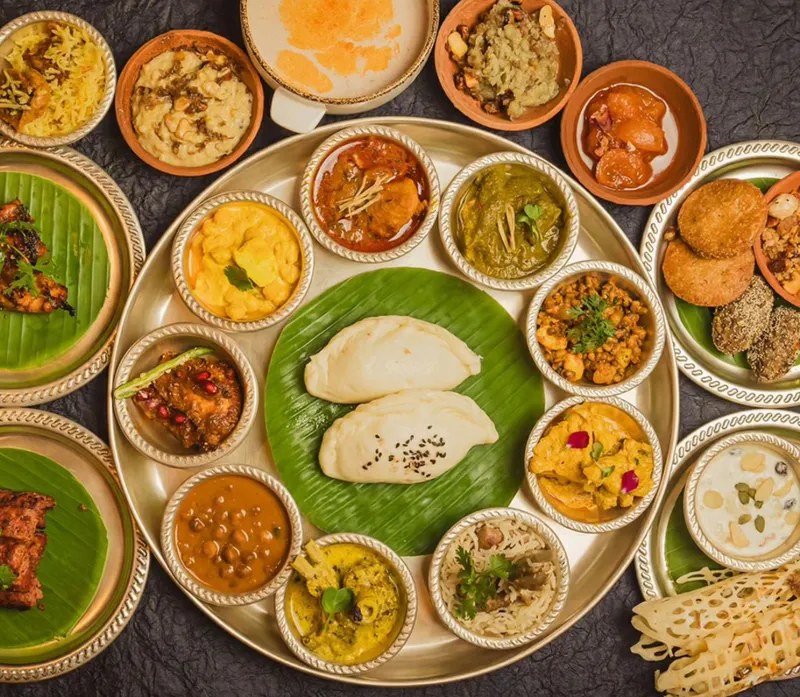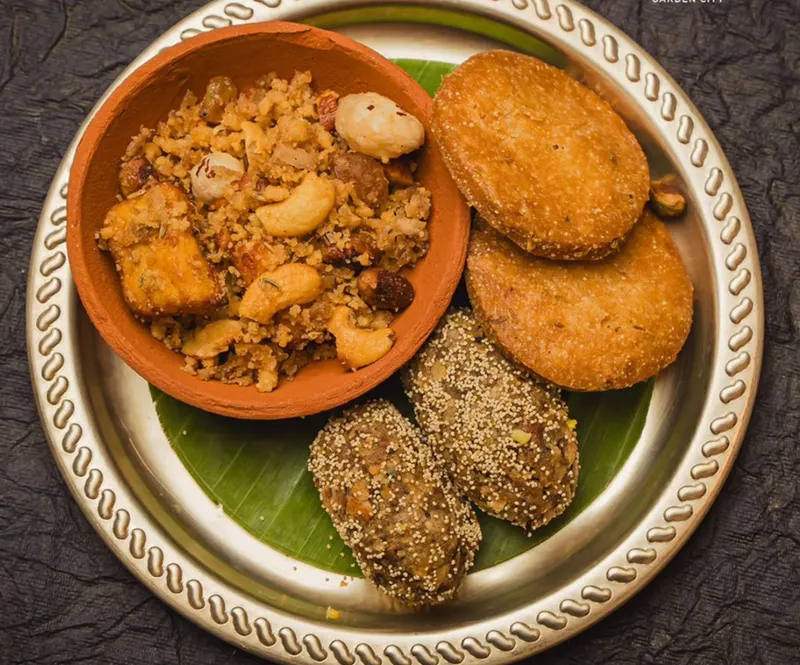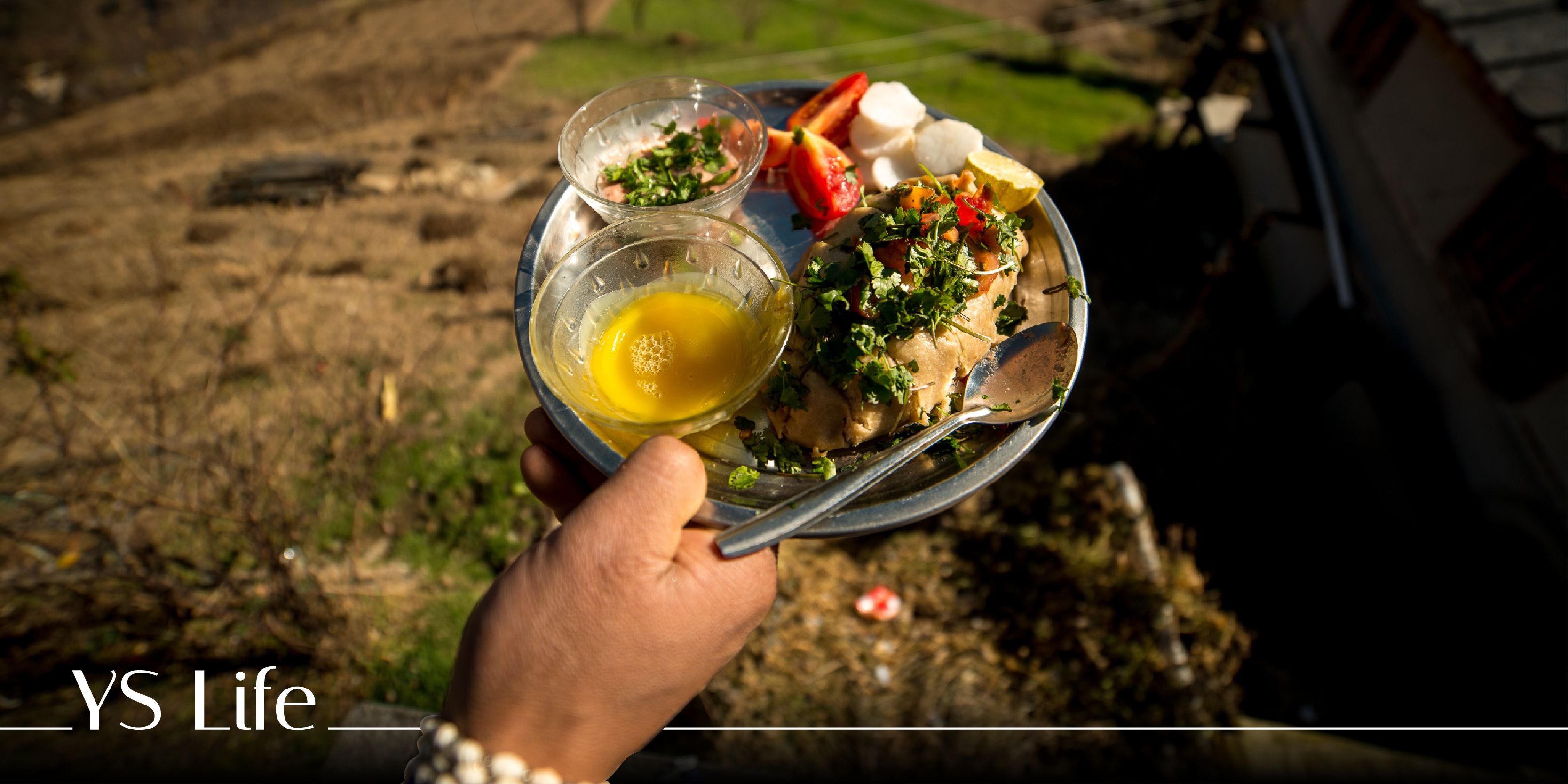Why Himachali cuisine deserves more love and attention
A deep dive into what makes Himachali cuisine unique and how chefs from the region are preserving its recipes and culinary identity and experimenting with local ingredients.
On a recent trip to Naggar in Himachal Pradesh, I was exposed to a handful of flavours from Himachali cuisine.
While siddu–a local steamed bread eaten with ghee–was a common find, only a few outlets offered Himachali dham, a Sattvic vegetarian thali that includes rice, madra (a local yoghurt-based lentil curry), kadhi, and greens.

Siddu, a local fermented bread
South Indian cuisine, including idli and dosa, and North Indian foods, such as dal makhani, butter chicken, naan and biryani, are popular all across the country. Other regional cuisines from places like Goa, Punjab, Maharashtra, and West Bengal too are well-known in India.
So, why isn’t Himachali food as popular as other regional cuisines?
Nikita Kuthiala, Founder of Pahadi Pattal, a venture that offers weekend delivery menus and home pop-ups, and a researcher of Himachali cuisine, puts it down to the state’s geographical location.
“Initially, connectivity to the far-flung areas of mountain terrains was not possible. Tourists were not exposed to the food in these areas. At the same time, the camaraderie among local people is so strong that they don’t believe in eating outside; food exchange happens between friends and family.”
She also points out that hotels and restaurants in Himachal usually cater to the tourists’ palate, which craves mostly Punjabi food.
“Regional food was never promoted on a larger scale, and hence people outside are not as aware of our regional cuisine. People have been happily eating Maggi and chai and have ignored any local culinary experience,” says Kuthiala.
However, this is slowly changing with chefs and culinary experts from the state making an effort to promote Himachali cuisine.
A primer to Himachali cuisine
What makes Himachali cuisine distinct is its clean flavours that are starkly different from the cuisines of the neighbouring states.
Sherry Mehta, a chef and Himachali popup specialist, points out that there’s a slight influence of Tibetan cuisine in Himachali food.
“Two of the most important food items in Himachali cuisine are plain rice and pulses, which are cooked in various forms. Meat is equally common among those who are non-vegetarian. The raw meat is cooked with whole spices and minimal ingredients,” she adds.
For those who want to get an authentic taste of Himachali cuisine, there’s nothing better than dham, remarks Kuthiala.
“It represents the heart and soul of Himachali cuisine. It is a mid-day ceremonial feast–an all-Sattvic food cooked without onion and garlic,” she adds.
Chefs who prepare the dham have to follow certain protocol; the preparation of this elaborate luncheon begins the night before. Copper utensils are used to cook the dham; special masalas are also needed.
Typically, madra is the star of dham. It is a curd-based gravy, generally cooked with rajma in Chamba, aloo chana in Kangra, Taro roots in Bilaspur, and sepu badi (split urad dal dumplings) in Mandi.

The Himalayan dham
For non-vegetarians, mutton is the meat of choice.
“Chaa meat and khatta meat–local meat preparations–are quite popular,” says Kuthiala.
Two unique breads hail from Himachal–siddu and babru. The first variety, made of wheat flour, is mostly prepared in Mandi, Kullu, Manali, Rohru and Shimla. The latter is black gram stuffed puris or kachoris.
“It takes a couple of hours to make siddu dough as it needs to ferment. It is enjoyed with ghee, dal, or green chutney made with fresh mint,” says Chef Mehta.
It’s not just the techniques but also the unusual local ingredients like Chamba rajma, Lahaul Spiti red rice, Kinnaur buckwheat and barley, Kangra corn, apples, apricots, and other fruits, and herbs that give a distinct flavour to Himachali cuisine.
Diverse interpretations
As Himachali cuisine slowly finds favour, chefs from the state are giving their unique spin to traditional dishes.
Former corporate lawyer turned outdoor chef, Nayantara Chauhan from Manali, who curates bespoke picnics under her venture PoPop, has given a creative twist to siddu.

Sepu badi, a traditional Himachali dish made with split urad dal dumplings in a spinach gravy
When Chauhan moved from Delhi to Manali a few years ago, she realised that siddu was largely vegetarian. Her love for meat prompted her to introduce a non-vegetarian version.
“Even though I love the vegetarian version with walnuts, the non-vegetarian in me was looking for more. I made mutton keema and stuffed the siddu with it. The result was so good that I made it a permanent addition to my outdoor meal experience,” she says.
In addition, Chauhan also tries to incorporate Himachali ingredients in other cuisines.
For instance, she uses bichoo booti, a local green, to make pesto, which is then served with crackers or sourdough bread.
“There’s also gucchi mushroom in gnocchi or in ramen,” she adds.
Swati Seth, the co-founder and host of the women-only farmstay ‘Seeking Slow’, recently began organising pop-ups under the name ‘A Cook On The Loose’. She too likes to add local ingredients to her preparations.
“Fiddlehead fern is mostly cooked as a regular stir fry in the region. But I also try to use it in a kadhi. I also add it to pasta. Besides, I make curry with sepu badi.
“In the season of wild mushrooms when there’s foraging, I don’t cook just regular sabzi. I make a Continental preparation or risotto. Or I grill mushroom and make a tortilla wrap out of it,” she elaborates.
Documenting culture and cuisine
While there’s a long way to go before Himachali cuisine receives its due, Chef Mehta believes interest is picking up.

A Himachali dessert
“I have witnessed an increasing number of people in the metros who are looking to explore the cuisine. Credit also goes to top hotels in India who are regularly organising Himachali pop-ups and food festivals,” she says.
Seth, who was featured in author Archana Pidathala’s book Why Cook?, recalls her experience of contributing to the prestigious project, which brought together 16 women and explored why they cook and how food anchors them in their life journeys.
“When Archana approached me, she said it would be nice to contribute recipes from Himachal, especially since I work with local women at my label The Color Caravan (a social venture that supports traditional crafts). I had already learned these recipes from locals, including someone who worked with me, called Neema. I also picked up the nuances from another old lady, Palmo dadi,” she recalls.
Kuthiala is of the view that documenting traditional recipes and cooking techniques is crucial to preserving the culinary identity of Himachal Pradesh.
“Our cuisine is not documented as such. It’s high time we record the information from local chefs, home cooks, and elders who have inherited the culinary knowledge. Food festivals, culinary tours, local celebrations, fairs and cultural events are the best mediums to highlight these traditional dishes,” she says.
(The copy was updated to correct a designation.)
Edited by Swetha Kannan











